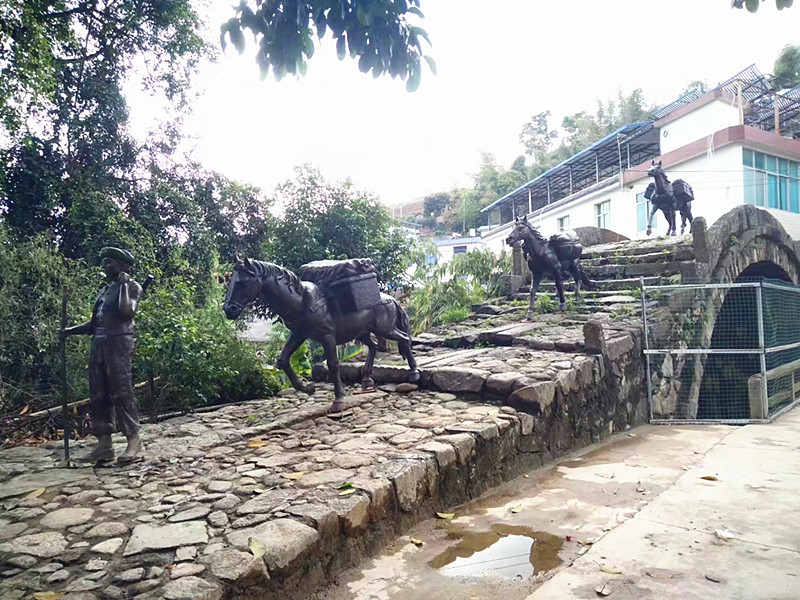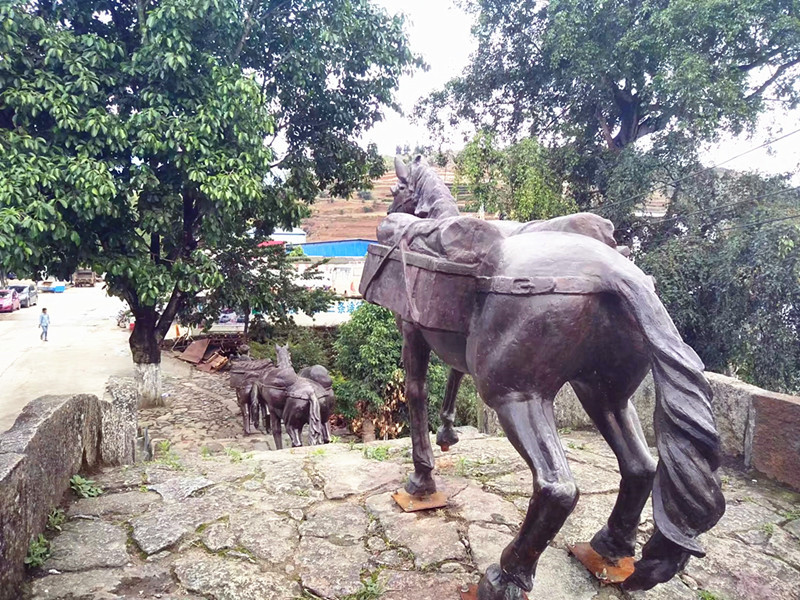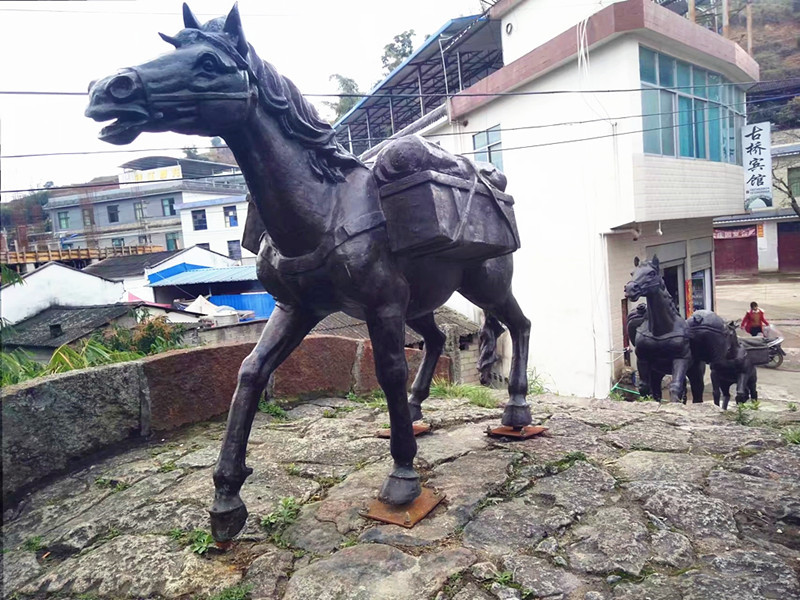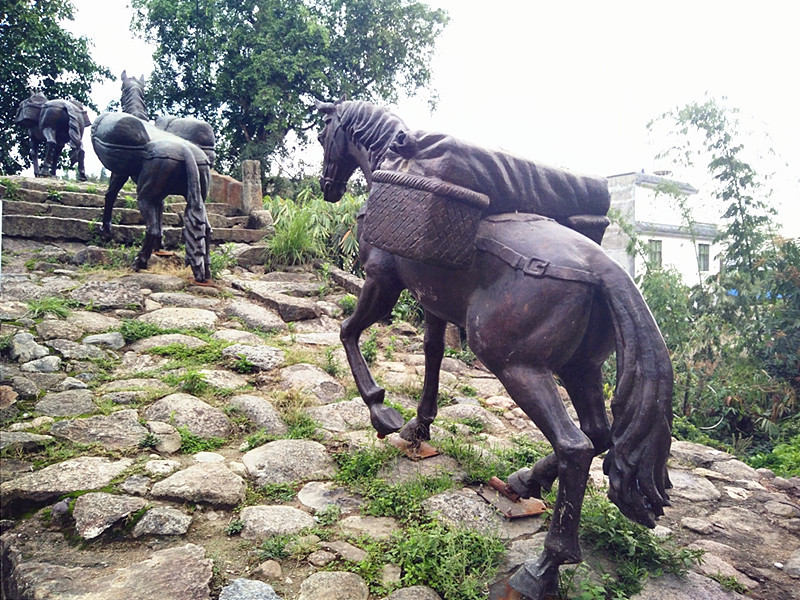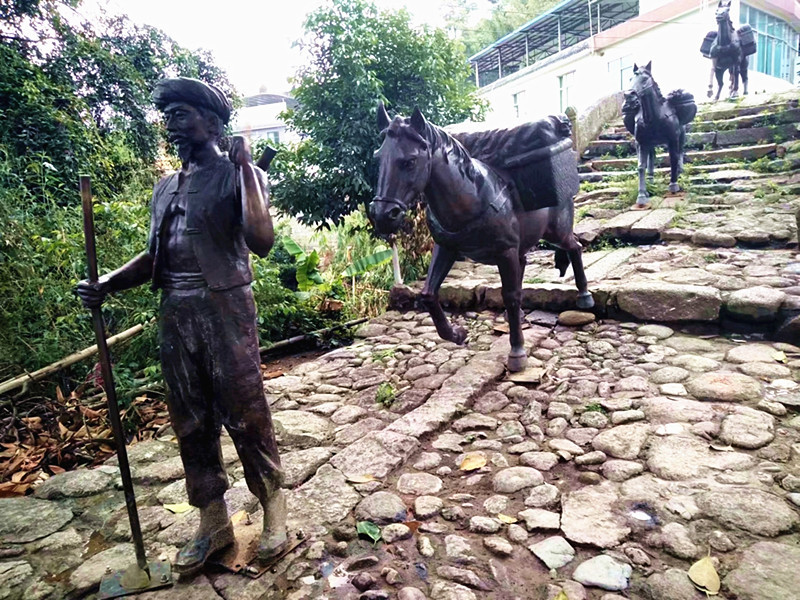ChangAn Bridge in Yunxian County, Lincang
Overview of ChangAn Bridge
ChangAn Bridge (长安桥) is located about 20 kilometers north of Yunxian County (云县), next to the Maolan River (茂兰河) on the west side of the Maolan Town (茂兰镇) government. It was initially built during the Qianlong era and was rebuilt in the 15th year of the Guangxu era (1889). This stone arch bridge measures 46 meters in length and 3.3 meters in width, with a span of 9 meters and a height of approximately 10 meters above the riverbed. The bridge features stone railings on both sides, adorned with a pair of stone-carved dragon heads facing upstream and downstream. Historically, it served as a vital transportation route between Yunxian and major cities like Dali (大理) and Kunming (昆明). In 1983, it was designated as a county-level cultural heritage site.
Historical Background
ChangAn Bridge is situated roughly 20 kilometers north of Yunxian County, next to the Maolan River on the west side of Maolan Town government. Built in the Qianlong era and renovated in 1889, this stone arch bridge measures 46 meters long, 3.3 meters wide, with a span of 9 meters, and stands about 10 meters above the riverbed. It has stone railings and a pair of stone dragon heads atop the arch, facing the river’s flow. During the Qing Dynasty and early Republic era, it was a key transportation route for the tea-horse trade.
Details and Honors
In 1983, ChangAn Bridge was recognized as a county-level cultural heritage site.
The Tea Horse Road and ChangAn Bridge
The Maolan Town (茂兰镇) in Lincang City (临沧市) was one of the most important stations along the ancient Tea Horse Road (茶马古道). The Tea Horse Road in Maolan extends over 80 miles, featuring inns such as Maolan, Anle (安乐), Shaojie (哨街), and Chaoyang Temple (朝阳寺). ChangAn Bridge, located about 20 kilometers north of Yunxian County, played a significant role in this historic trade route. Historical records indicate that the Maolan market was established around 1610 during the Kangxi era of the Qing Dynasty.
Maolan was not only a key station on the “Yunxia Line” of the Tea Horse Road but also a renowned tea-growing area. In the mid-20th century, as the first horse station along the route from Yunxian to Kunming, Maolan flourished with bustling markets and numerous merchants, especially during the spring tea season from March to June.
Architectural Features
ChangAn Bridge is essential for transport between Lincang, Dali, and Kunming. The bridge spans east to west, resembling a rainbow resting on water. Its elegant yet simple design has stood the test of time against floods for over a century. Although the original bridge has been destroyed and its inscriptions lost, the current bridge was funded by local gentry, including Lu Guangzhao (卢光肇) and Yang Changyuan (杨长元), and reconstructed in 1889. Built with granite blocks, it is arched, measuring 46 meters in length, 4 meters in width, with a 10.6-meter span and standing 10 meters above the riverbed.
ChangAn Bridge is one of the important bridges along the ancient Tea Horse Road, which once saw thousands of travelers and horse caravans. The impressions left by countless hoofprints are still visible today, each telling a beautiful story.
Visiting ChangAn Bridge
Standing by the bridge, one can gaze upon the remnants of the ancient bridge and the long Tea Horse Road, listening to the rushing water. This evokes a sense of nostalgia for the vibrant past when caravans transported goods along this route. The ChangAn Bridge remains a valuable historical resource for Maolan, representing not just a bridge but also a witness to the passage of time. It was recognized as a county-level cultural heritage site in 1986 and elevated to a municipal level in 2006.
Today, the ancient bridge stands weathered yet resilient alongside the bustling asphalt roads of Maolan. Despite the dust raised by passing vehicles and the modern scene illuminated by streetlights, it continues to witness the myriad changes over centuries.
How to Get There
To reach ChangAn Bridge, visitors can travel by bus or car from Lincang City to Yunxian County and then proceed to Maolan Town. The bridge is accessible via local roads and is well-signposted.
Travel Tips
- Best Time to Visit: Spring and autumn offer pleasant weather for exploration.
- What to Bring: Consider bringing a camera for photography and comfortable shoes for walking.
- Local Cuisine: Don’t miss trying local dishes available in nearby restaurants, especially tea-based meals.
- Accommodation: Look for guesthouses in Maolan for a cultural stay.
- Cultural Respect: While visiting, be mindful of the historical significance of the bridge and surrounding areas.
